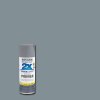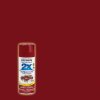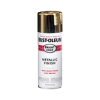Here's what I do...
1) I do not use a heat gun on my mats before building.... I reverse-roll the tubes to take out the curve, and then just hand-straighten while I'm building. Once pieces are together, I do run the heat gun over the surfaces to tighten them up a little and lock the shape in. You've gotta be crazy careful with a heat gun on glued foam, moving it constantly, or your seams will separate. I just do it enough to make the surface sheen/color change slightly.
2) Depends on the colors you use. With the Rustoleum 2X, ignore the can directions. I recoat after about 10-15 minutes, and repeat until I've got the surface built as much as I want. If I recoat in THE SAME COLOR after that, I wait about a day. Could probably shoot sooner, but I don't. It does recoat VERY nicely though in the same color.
3) BLACK. Always black. It makes colors (like the red especially) pop better on my stuff. I've heard of color-matching with it (use red plasti under red paint, etc.) but I see no real advantage to that.
4) Depends on what I'm spraying. Those Rustoleum 2X paints (in gloss) lay on with a lacquer-like finish, really nice, and I think you'd be opening up a huge can of worms trying to clear-coat over it. I do clear coat other finishes, but it all depends on the project.
5) A few things lol....
a) If you're using those and plastidipping, skip the primer. You won't need it, save the money or get extra Plasti and lay on a couple of more coats to smooth your panels.. Plasti's finish gives you an awesome idea of how your paint coats will come out and what will show.
b) If you're layering your coats, DEFINITELY let that 2X cure at least a couple of days before using the Rustoleum Metallic finishes, the longer the better. If you spray too soon, those Rustoleum metallics will chemically react with the 2X and craze the whole surface out, ruining the finish. I've had this happen even after 48 hours of curing, if it happens you'll have to sand it all down and refinish.
c) If you have a choice to mask a color, you'll want to tape the 2X color and not the metallics... Put another way, Spray your reds, let it cure, and THEN mask the red to spray in the gold... The 2X masks really nice once it's cured, I've never had problems with painter's tape pulling up the finish. I can't say the same for the Rustoleum metallic finishes... :rolleyes










